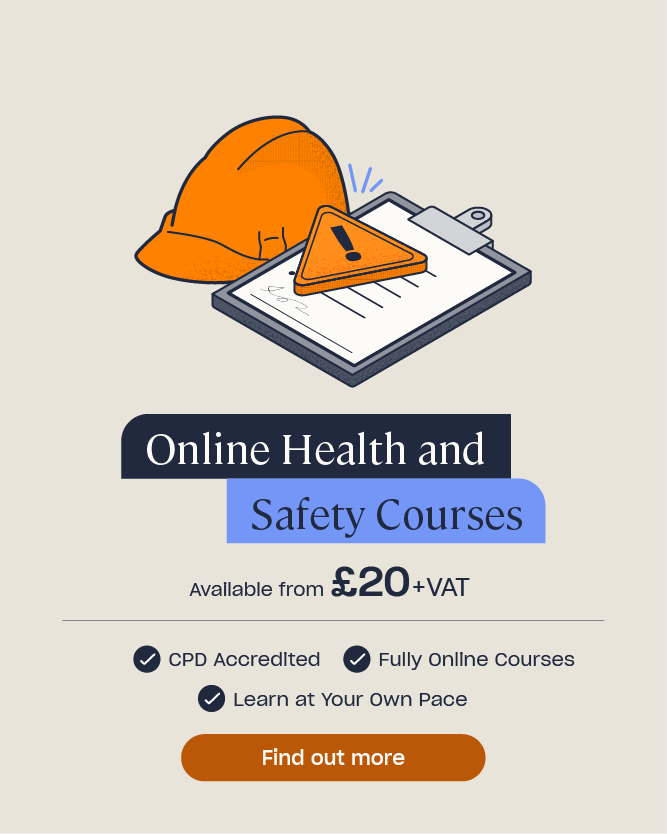What is ISO 45001 – Occupational Health and Safety Management?
All organisations are required to manage health and safety risks, ensuring that staff and visitors always remain safe and well whilst in the workplace. ISO 45001 provides you with a comprehensive framework to follow that enables businesses to better identify hazards, carry out a risk assessment and actively manage a robust, internationally-recognised occupational health and safety management system. In this article, we’ll look at what an ISO 45001 occupational health and safety management system is, how ISO 45001 benefits businesses and how to get ISO 45001 certification.
What is ISO 45001?
ISO 45001 is an internationally-recognised standard that helps businesses to develop and maintain an effective occupational health and safety (OHS) management system. It gives organisations a clear framework to follow with the overall aim of improving the health and safety of the workplace, for both employees and visitors.
Workplaces of all types must adhere to health and safety legislation – notably the Health and Safety at Work, etc. Act 1974 – and ensure all workplace hazards are identified, controlled and managed. This includes any risk that might affect a person’s health, whether physical or mental, or their safety whilst at work.

ISO 45001 covers various key areas of an OHS management system, including hazard identification and risk assessment, legal compliance, health and safety policies, setting objectives, emergency planning, incident investigation, implementation of procedures, auditing and continual improvement.
It should be noted that ISO 45001 is now the expected standard for organisations, instead of the existing OHSAS 18001 British standard that applied previously. If your company has OHSAS 18001 certification, then it’ll need to re-address its OHS management system and make changes to ensure it complies with the latest practices contained in ISO 45001.
The main differences between ISO 45001 and OHSAS 18001 are that ISO 45001 has more emphasis on leadership engagement, risk-based thinking and continual improvement of OHS performance.
Benefits of ISO 45001
Being ISO 45001 certified shows to clients, contractors, suppliers, stakeholders and investors that your organisation takes health and safety seriously, has a robust OHS management system in place and is compliant with the requirements of the ISO standard.
Other benefits of ISO 45001 certification include:
- Fewer workplace injuries, accidents and near misses – having a robust ISO 45001 OHS management system in place means all hazards have been identified as far as possible, effective control measures have been implemented and the risks are continually being monitored. This reduces the likelihood of accidents and injuries occurring, reduces their severity and reduces the chances of near miss incidents.
- A clear framework to systematically manage risks – ISO 45001 gives you an internationally-recognised framework to follow to ensure occupational health and safety risks are well managed in your businesses. This framework enables you to strategically carry out a risk assessment, implement control measures and improve health and safety.
- Compliance with health and safety legislation – ISO 45001 certification ensures that your company complies with all relevant health and safety regulations, whatever the industry you work in and no matter the level of risk involved.
- Better commitment to health and safety – achieving and maintaining ISO 45001 certification requires you to look at your OHS management system in great detail and ensure all leaders are on-board with the control measures and continual auditing of the system. In turn, this improves your company’s commitment to health and safety and will boost your reputation as a caring employer.
- Continual improvement of health and safety management – the ISO 45001 framework is based on ‘plan, do, check, act’, meaning that you’re required to continually audit, review and improve your OHS system. This ensures your system continues to work, evolve and enhance health and safety.

ISO 45001 Requirements
ISO 45001 applies to all organisations in all industries, no matter the level of risk or the number of health and safety regulations you need to comply with, and can be integrated into your existing health and safety management system.
ISO 45001 certification is particularly valuable for higher-risk industries, such as manufacturing, construction or explosive atmospheres. For lower-risk industries, a complex OHS management system might not be as useful, and a more simple risk assessment may be all that’s required to effectively manage hazards and their effects.
The ISO 45001 requirements cover areas such as:
- How well your organisation and staff understand the health and safety issues specific to the business and industry, and how your organisation responds to those issues, taking into account everyone who might be affected.
- How the leadership team demonstrates their commitment to health and safety by enforcing procedures, identifying and reporting new hazards, understanding safety regulations and providing clear guidance to workers.
- How the leadership and management team communicate health and safety expectations to workers to ensure they stay informed and up-to-date on risks and their controls, whether that’s through toolbox talks, regular staff training or team updates.
- How the organisation identifies, evaluates and resolves risks and how effective an organisation’s risk assessments are. Workplaces must consult with their workers to ensure all hazards are identified and that control measures will work in practice.
- How the organisation routinely audits, updates and improves its health and safety management system, which methods it uses and who has responsibility for doing so. The company must have a system in place for identifying areas for improvement and then implementing changes.
Looking to Learn More?
In order for your occupational health and safety management system to be effective, it’s vital that all members of staff are up-to-date with their health and safety knowledge. Our full range of online Health and Safety Courses covers all industries and all topics, ensuring everyone at every level can receive the essential training required by law.
How to Get ISO 45001 Certification
To get ISO 45001 certification for your organisation’s OHS management system, you’ll need to follow a series of steps:
Step 1: Understand the ISO 45001 requirements
Firstly, it’s essential that you familiarise yourself with the requirements and expectations of the ISO 45001 standard. To create an ISO 45001-compliant OHS management system, you’ll need to understand the context of your organisation and how the standard applies to your industry. You can purchase a copy of the standard here.
Step 2: Undergo a stage 1 assessment
A stage 1 assessment is done to check whether your occupational health and safety management system meets the requirements of ISO 45001 or whether improvements or changes are needed. After the assessment, you’ll receive an audit report that highlights the actions needed in order to achieve certification. Changes might include altering the management structure, better compliance with regulations, improving hazard identification or making practices safer.

Step 3: Undergo a stage 2 assessment
A stage 2 assessment is a more in-depth review of your OHS management system by an auditor. The auditor will look at all your operations, procedures and processes to check whether they meet the ISO 45001 requirements or if more is needed. If there are any areas of non-compliance with the ISO 45001 standard, then these will be communicated to you so improvements can be made before a certificate will be issued. Too many instances of non-compliance could result in your application being rejected.
Step 4: Receive and maintain your ISO 45001 certificate
If your organisation’s OHS management system passes the stage 2 assessment, and no further actions are required and all areas of non-compliance have been addressed, then you’ll be awarded the ISO 45001 certification. The ISO 45001 certification is valid for 3 years – the same as all ISO certifications – and requires regular audits in order to be maintained.
An ISO 45001 occupational health and safety management system is an internationally-recognised framework for effectively identifying and managing safety hazards within your organisation. When the steps of the ISO 45001 framework are followed and ISO 45001 certification is obtained, your organisation will be able to prove that it takes the health and safety of workers seriously and can ensure the procedures it has in place remain effective.
Further Resources:
- Online Health and Safety Courses
- What are Safe Systems of Work?
- Toolbox Talks in Construction: Guidance on Meeting Topics and Resources











